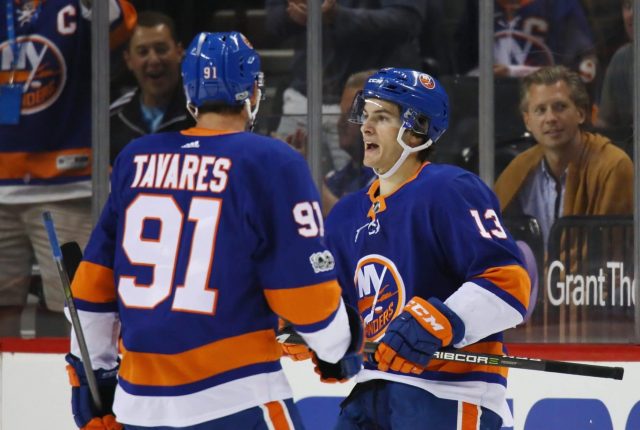Powerless Play: New York Islanders Must Fix Broken Power Play to Contend

If the New York Islanders are going to be more than spectators for the Stanley Cup Playoffs, they must fix their dismal power play—now.
[dropcap]T[/dropcap]he New York Islanders have been solid enough in two of the last three seasons to qualify for the Stanley Cup Playoffs. In 2017, they missed the chase for Lord Stanley’s cup by only one point.One of the major reasons they sat home was a dismal power play, a unit whose 14.9 percent success rate was the NHL’s third-worst.
Both the veterans and the young guns have talent. The offseason trade for Jordan Eberle, plus larger roles for Mathew Barzal and Josh Ho-Sang—and the continued presence of superstar John Tavares—should have the Islanders clicking with a man advantage.
In hockey, it’s normal for a team to expect to score two or three even-strength goals per game. In the event that the power play contributes, a team should have no problem winning the game. The formula is simple. Carrying it out is not.
[sc name=”Islanders Section” ]For the past two seasons, the Islanders have sported a power play strategy that features numerous passing plays in the neutral zone, eventually dropping the puck back to the last skater. Then all five skaters push through the opposing blue line together, delaying the entry an extra few seconds.
Ho-Sang made the entry look easy a couple times last season when he was called up in March and dazzled when Tavares went down with a hamstring injury. If you don’t know what Ho-Sang can do, it’s time to get to know him. The young forward would make the risky play and attempt to carry it through the zone instead of constantly passing and skating in circles.
This season, the Islanders are a disappointing 0-for-15 on the power play, tied for last with only four other teams. While most of the opponents they’ve played are expected to be playoff teams, that is no excuse for the power play to be as bad as it has been.
Perhaps one of the worst aspects of it is the fact that they aren’t generating scoring chances from the prime areas on the ice. For most of the attempts, it has been a shot off the rush or from the point with brief effective puck movement putting the defense out of position.
[sc name=”Islanders Center”]In the offseason, head coach Doug Weight brought in an entirely new coaching staff. For a boost on offense, Weight added a two-time Stanley Cup champion, Scott Gomez, to help improve their play with a man advantage. Of the 756 points he scored in 1079 games over a 16-year career, 156 came on the power play.
So is it the player’s skill? Is it the coaching staff? Both have been improved. No, the problem is simply the strategy.
The individual players are too talented to slow the game down and wait for everyone to get to the blue line. Teams like Washington and Pittsburgh, who are lethal on the power play, will do any type of zone entry given to them. Unlike the Islanders, they won’t wait to force a specific style of play against every opponent. Establishing an effective power play not only increases goal production, it also creates a fear in the opposing team. That instilled fear in the other team can then shift the momentum of an entire game.
If the Isles are to start winning the close games like the ones they lost to Anaheim and St. Louis, they need the power play to adapt on the fly. If their zone entry improves the goals are sure to follow.
The Islanders are currently on a three-game road trip in California and are coming off a loss to the Anaheim Ducks. Their next opponent is the San Jose Sharks on Saturday night with a scheduled puck drop for 10 p.m. ET.
Unless they make some changes to the power play—and make them now—there’s no reason to believe their trip to San Jose will turn out any different than their trip to Anaheim did.
[sc name=”Islanders Link Next” link=”https://elitesportsny.com/2017/10/13/mathew-barzal-anthony-beauvillier-new-york-islanders-upcoming-duo/” text=”Meet the Isles Up-and-Coming Duo” ]





